We may earn revenue from the products available on this page and participate in affiliate programs. Learn More ›
Laminate flooring has come a long way since it first was introduced in the 1970s. The versatile flooring comprises layers of synthetic material engineered to look like wood, stone, or another surface. Most modern laminate flooring is made of melamine resin and fiberboard materials in four or more layers, depending on their construction:
- Topcoat: The top, or wear, layer typically is transparent and is made of materials like urethane and aluminum oxide. Its purpose is protection from stains, scratches, and ultraviolet rays.
- Visual layer: Also called the design layer, this is the decorative layer of laminate flooring. Through special photographic processes, this layer can mimic the look of hardwood or another natural material.
- Core material: The thickest section of laminate lies just above the backing, and is made of high-density fiberboard from soft wood, hardwood, or recycled materials. This layer provides structure and with special resins can protect against conditions like high humidity or temperature changes.
- Backing: Also called underlayment, the bottom layer is thin and waterproof to protect against moisture.
- Foam underlay: Laying a thin foam layer beneath the laminate adds to soundproofing.
The durability and low price of laminate flooring have helped it garner a reputation as an affordable alternative to hardwood or natural stone flooring.
Standards for Laminate Flooring Durability
Before delving into the pros and cons of laminate flooring, it helps to know that many manufacturers assign an abrasion criteria (AC) rating to each product. This is a European standard that details how well a floor holds up to wear. The higher the AC rating, the more wear it can take; homeowners typically need only levels 1 through 3.
| Abrasion Criteria Rating | Use |
| AC1 | Moderate residential use (bedrooms, closets) |
| AC2 | General residential use (living rooms, kitchens) |
| AC3 | Heavy residential use or moderate commercial traffic |
| AC4 | General commercial traffic |
| AC5 | Heavy commercial applications |
Abrasion class is only one mark of durability, however. The North American Laminate Floor Association (NALFA) provides a certification seal to flooring that passes a series of 14 performance tests, such as load, resistance to stains and impacts, and wear resistance. As of June 2024, the organization was reviewing its testing standards, but many products carry a NALFA-certified label.
Pros of Laminate Flooring
Although wood floors are beautiful, they can be costly and tricky to install. Laminate floors cost less, are easier to install, and look more like wood than ever before. According to Paul Carter, Executive Vice President of Strategic Initiatives at Empire Today, “Today’s laminates are high-performing, durable, and easy-care products that deliver a ‘wood-look’ experience. Now available in waterproof designs across a wide variety of price points, laminate is a practical and compelling choice for virtually any room in the house.”
It’s durable.

Laminate is typically more durable than hardwood flooring. The many layers and materials in laminate flooring add to its high durability. The compressed layers hold up to foot traffic, impact from dropped objects, scratches, stains, and sunlight. The topcoat, or wear layer, helps protect the material from damage and stains.
Mopping up spills, sweeping, and occasionally cleaning per the manufacturer’s advice is all the floors need to hold up to wear. If a piece somehow gets damaged, you can often replace the individual plank.
With diverse product offerings, you can choose the best option for the type of wear you expect (like bathroom vs. bedroom).
Laminate flooring is affordable.
Laminate flooring can run about half the price of wood flooring but, as with wood, you’ll find a range of varying quality. Some look more realistic than others, and some are less substantial in the thickness of the different layers, making them more likely to wear out sooner than a higher-quality product.
You’ll typically find laminate options starting at $1.70 per square foot and topping out around $17 per square foot.
It’s easy to install.
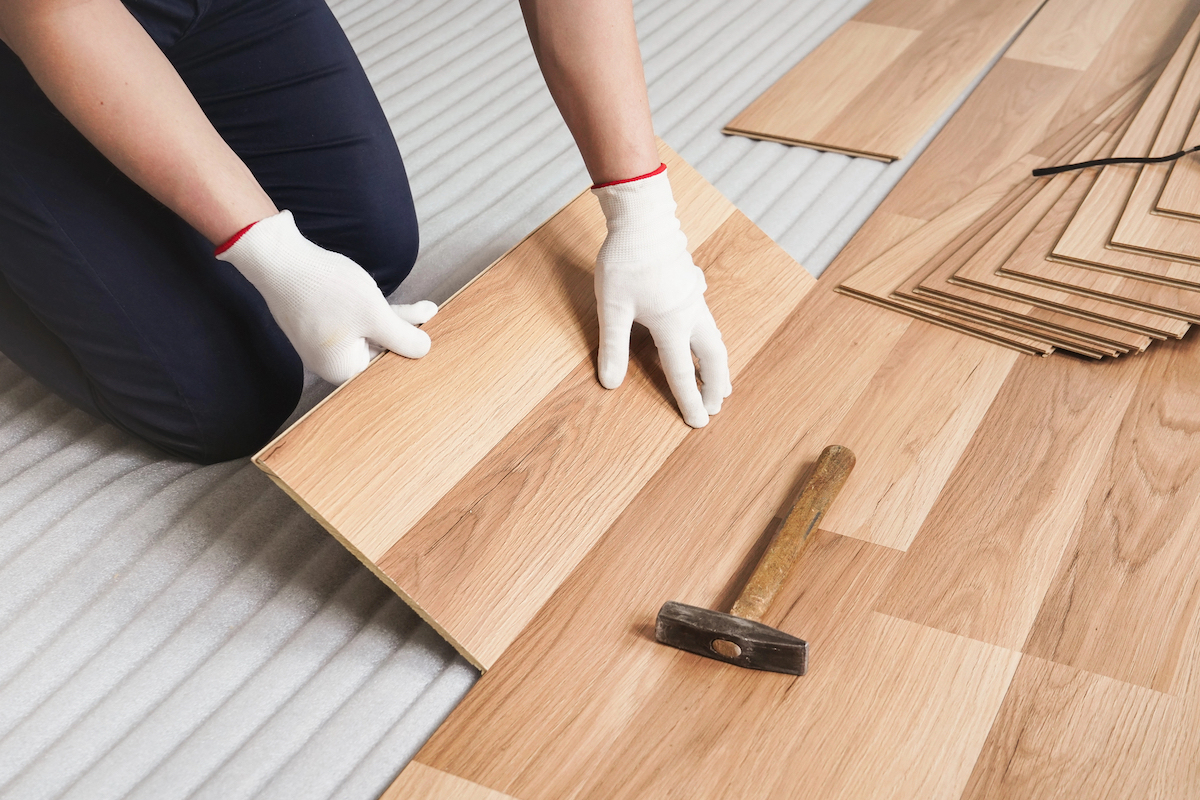
Laminate is popular with DIYers because it can be installed fairly easily atop structurally sound subfloors. There’s no glue involved, as laminate planks more or less float above the floor (with the necessary underlayment) and connect to adjacent pieces using snap-and-lock or tongue-and-groove joinery. Most moderately handy DIYers can floor an entire room in a weekend.
“Today’s laminates are high-performing, durable, and easy-care products that deliver a ‘wood-look’ experience. Now available in waterproof designs across a wide variety of price points, laminate is a practical and compelling choice for virtually any room in the house.”
—Paul Carter, Executive vice President, Empire Today
Cons of Laminate Flooring
Laminate flooring might not be for everyone, although many past criticisms (especially its appearance) have been overcome by improved manufacturing. Still, be sure to consider these drawbacks when deciding on laminate flooring vs. hardwood or stone.
It’s noisier than hardwood.
Hardwood materials have more natural sound absorption, so they can be quieter than laminate surfaces. However, any hard surface flooring is not as quiet as carpet without an attached pad or underlayment. If you are deciding between hardwood vs. laminate and sound is a concern, especially for multiple stories or rentals, be sure to inquire about soundproofing underlayment.
Laminate can be susceptible to moisture.
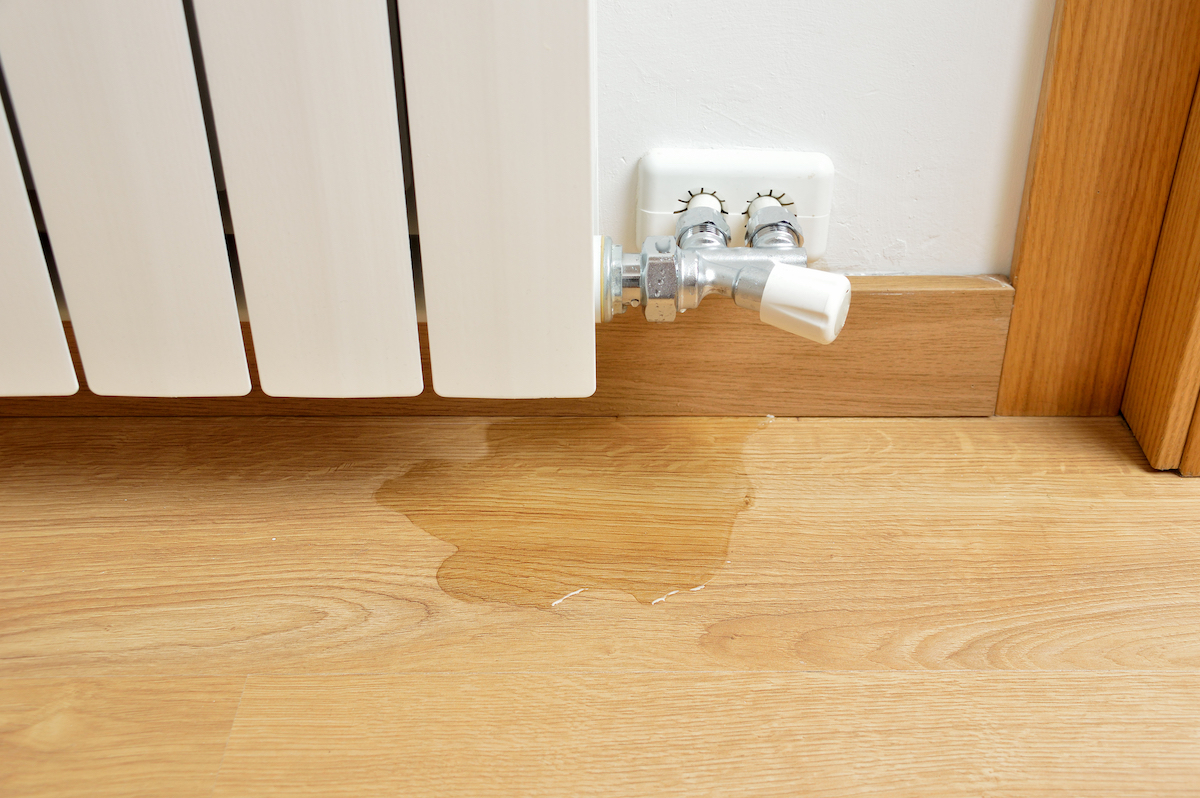
Laminate flooring is more susceptible to water damage than vinyl flooring, so this is a consideration when choosing materials for high-moisture rooms. It is best not to let moisture remain on laminate surfaces. In addition, laminate is more likely to let moisture in if not installed correctly.
It can’t be refinished.
Laminate flooring is durable, but it won’t last forever. Despite technological advancements in laminate flooring and its protective layers, it still gets its look solely from the image layer, which can’t be sanded and refinished when it starts getting worn (at least not effectively). Wood, of course, can be revived multiple times over its lifetime, with the potential to last decades.
So while the upfront price might be right for laminate, know that in the long run, wood might be a better buy. In addition, wood offers a higher return on investment in a home’s resale value.
The warranty may only be valid if laminate is installed by a professional.
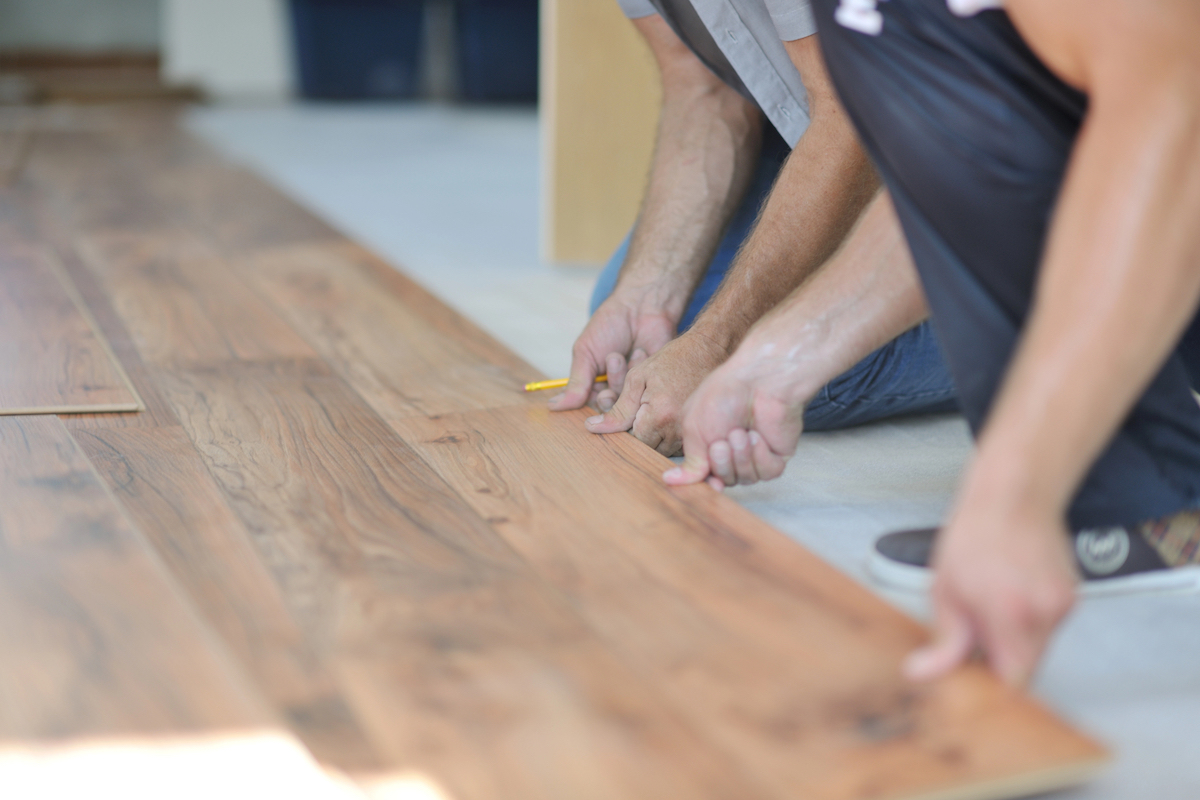
Full coverage by your laminate manufacturer’s warranty might require professional installation. Review the terms of your product’s warranty prior to purchase if you’re planning to DIY the job, or add the cost of professional installation to your budget if that makes more sense for you.
Laminate Flooring Costs
The cost of laminate can vary widely by brand and the type, but will almost always be less expensive than hardwood. Maple or oak looks can cost as little as 70 cents per square foot for materials, while hickory up to $2 per square foot to purchase. Hardwood flooring costs are closer to $5 per square foot.
Professional Installation of laminate flooring costs much less than hardwood, at a range of $3 to $13 per square foot (compared to $6 to $25 per square foot on average for hardwood, and nearly as much for stone or tile floors).
Laminate Flooring Lifespan
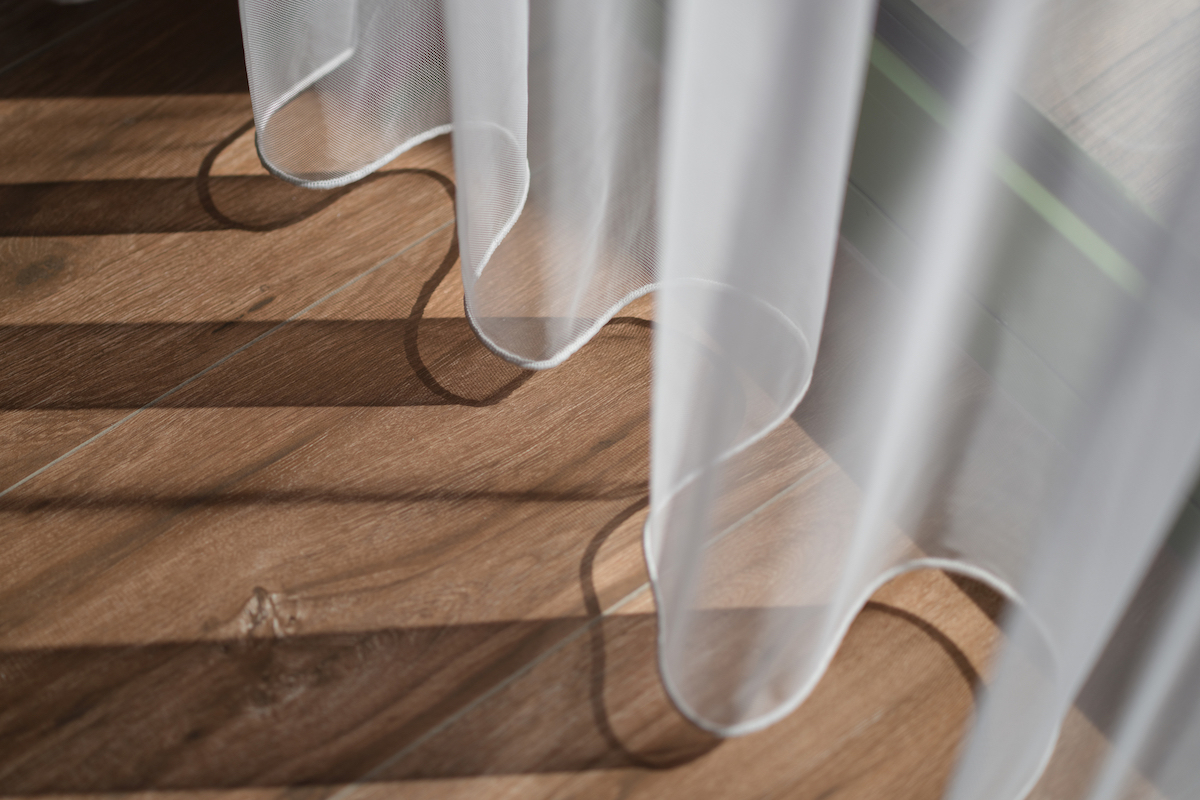
Because of its composite build, laminate flooring lasts a long time; it resists the sort of fading in sunlight that wood flooring is subject to, and can last at least 15 to 20 years. Most laminate brands carry a 10-year warranty, but some offer warranties up to 25 years. Vinyl flooring also tends to carry a 20-year warranty.
In contrast, hardwood flooring lives longest of any type; it can last 30 to 100 years with proper care. Still, it will likely need sanding and refinishing at one or more points over its long life. It’s helpful to weigh the potential cost or DIY effort to refinish wood flooring vs. removing laminate flooring and replacing it with an updated laminate style. Engineered hardwood flooring is an easy-care option, but the hardwood layer will not hold up to the refinishing that actual hardwood can take.
How to Maintain Laminate Flooring
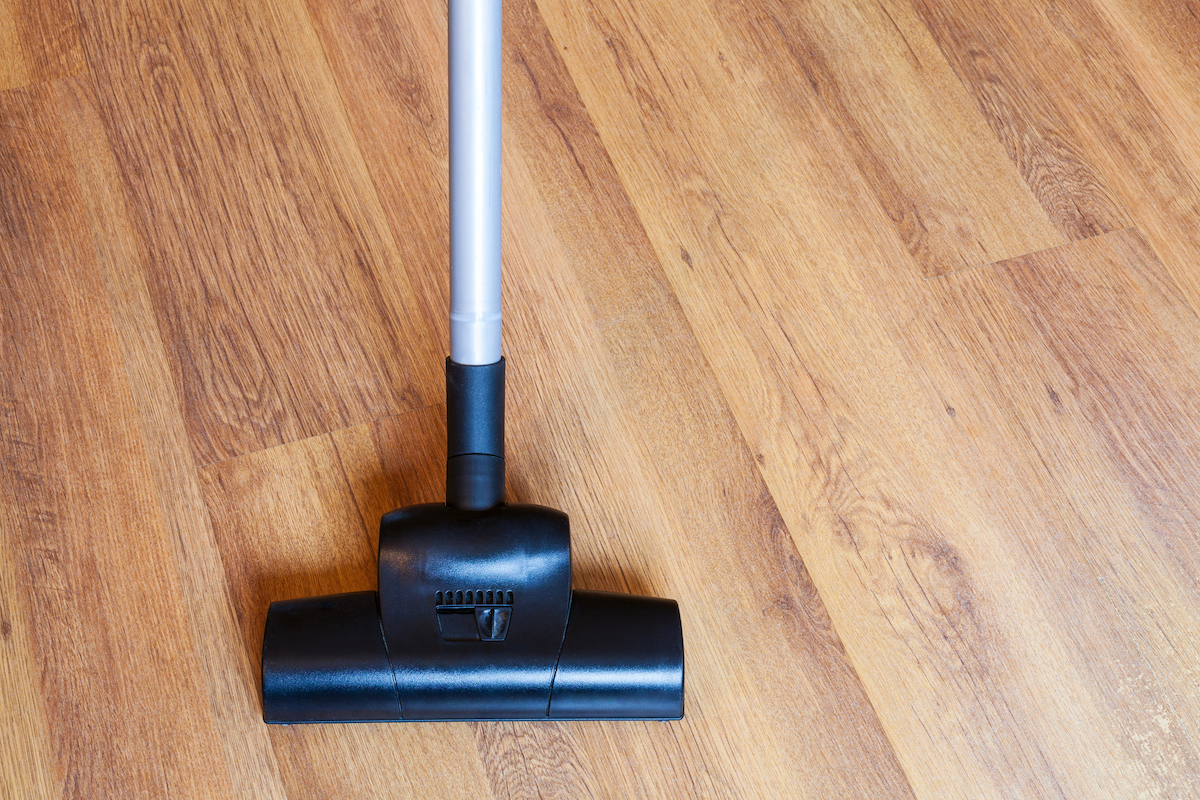
Always check manufacturer recommendations for cleaning laminate flooring, especially if the care affects its warranty. In brief, sweep and vacuum as needed and clean carefully with plain water.
Excess water can cause laminate flooring to warp or stain. Use a flat floor mop with a microfiber cloth rather than a traditional wet mop, and wring out the water often. For tougher cleaning jobs, use a commercial laminate floor cleaner. An acetone-based solution (like nail polish remover) can help tackle tough stains. Although laminate floors look like wood, they should never have oil-based cleaners, wax, or polishes used on them.
The top layer of laminate floors also is sensitive to heat, so avoid use of steam mops. Their use of heat and water can permanently damage a laminate floor, even after only a single cleaning.
Laminate Flooring Designs and Brands
Laminate flooring includes an image layer, into which a digitally enhanced photo of a natural material is embedded to mimic materials from exotic hardwoods, to concrete, to natural stone. It also comes in a variety of colors, lengths, and widths and, these days, texture can even be embossed to give the flooring a more realistic feel. In short, today’s laminate products offer styles for nearly any home decor.
There are plenty of flooring brands from which to choose. The best laminate flooring has quality construction, durability, and the appearance you most desire. For living areas, entries, and other high-profile areas, consider top luxury brands of laminate.
Laminate Flooring vs. Vinyl Flooring
Although vinyl flooring appearance also has improved in recent years, laminate flooring better mimics the look of higher-end materials like stone, ceramics, and hardwood. Since laminate is made with thicker layers, it generally is more comfortable under foot than vinyl, especially in living or sleeping areas. Laminate flooring is a good choice for homes with pets and children, since it resists impact damage and won’t pull up like vinyl edges can.
In the vinyl vs. laminate flooring debate, it’s clear that both are long-lasting floor materials if cleaned and maintained as recommended. However, vinyl is waterproof and holds up better to moisture than laminate can. Although laminate is durable, its layers can wear over time, and vinyl’s water-resistance makes it more durable in many instances.
Is Laminate Flooring Right for You?

Choosing the right flooring for a room is an important decision. Cost, durability, ease of cleaning and maintenance all are factors. The particular room and family situation (kids, pets, aging parents) or lifestyle also come into play. Deciding whether laminate is right for you is a matter of weighing laminate flooring pros and cons against other flooring types.

